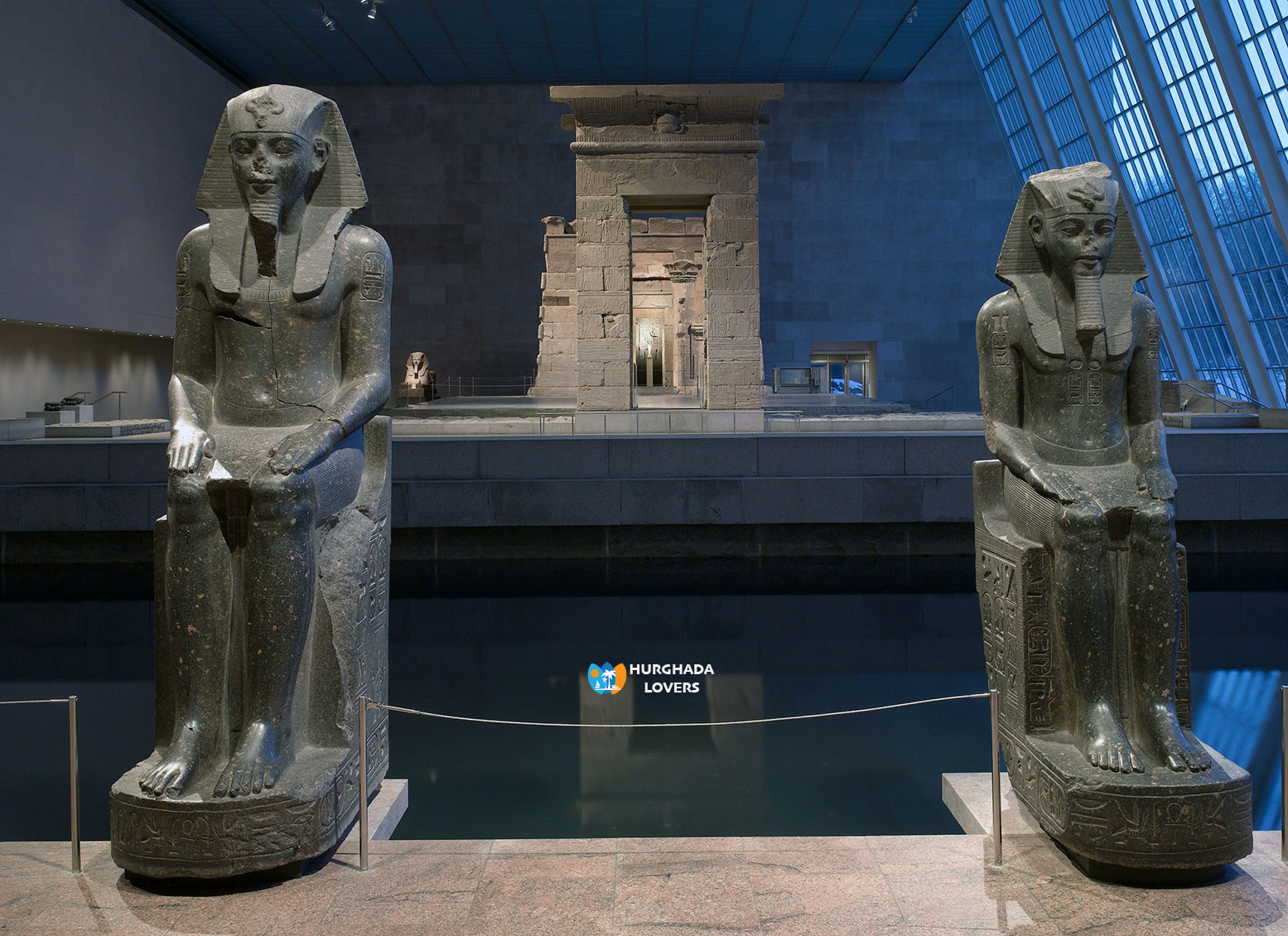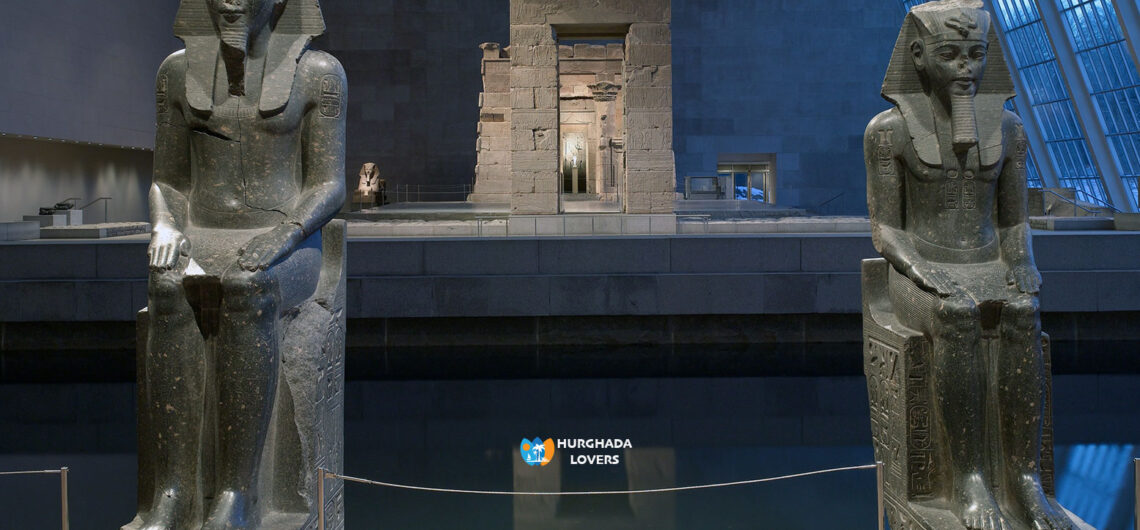The Metropolitan Museum of Art, New York, USA | Facts and history Egyptian Antiquities artifacts & How many Egypt collection, Mummy Pharaohs and more Ancient Egypt History…
Facts about the civilization of ancient Egypt, the history of the most famous and largest museums in the world, the collections and Pharaonic Egyptian Monuments it contains, and more..
The Metropolitan Museum of Art Facts
The Metropolitan Museum is one of the largest museums in the United States and is located in New York City. The museum contains approximately 2 million artistic masterpieces, including Egyptian antiquities to discover the history of the Pharaonic civilization. Find out another group of information about the museum below..
Considered the largest art galleries in the world, the Metropolitan Museum has 17 curatorial departments.
The museum includes a collection of European antiques and arts dating back to the Middle Ages.
There is also a large collection of costumes and accessories, as in Clothing in ancient Egypt, as well as musical instruments to discover the extent of the development of Music in Ancient Egypt, military armor, and weapons used in the army Military of ancient Egypt.
The pieces displayed in the museum date back to various civilizations around the world, and there are designs inside the museum dating back to the first century in Rome.
Inside the museum there are approximately 26,000 artifacts dating back to Egyptian history, all of which date back to approximately 300,000 years..
Egyptian antiquities at the Metropolitan Museum
In the Metropolitan Museum there is an outdoor sarcophagus “Ancient Egyptian Coffins” of Amun Ra Hantawi, which is the sarcophagus of the singer Amun, who was buried in a looted tomb..
Amun’s burial included a collection of pharaonic coffins and jewels, and the body was wrapped in layers of linen bandages..
The head of King Seti II, the most famous pharaoh king from the Nineteenth Dynasty of Egypt in The New Kingdom period, indicates the development of Sculpture in Ancient Egypt and is one of the most famous Egyptian antiquities in the museum. This piece dates back to the year 1194 BC..
The head belongs to the body of the statue, which is currently located in the Temple of God Amun, the most famous ancient Egyptian deities, as in the beliefs and Ancient Egyptian religion, in Luxor, within the Karnak Temple complex..
The crown on top of the head is painted blue, the forehead is yellow, and the face is painted red.
There is also a statue of the Sphinx of Queen Hatshepsut “Female Pharaohs“, the most famous Pharaonic queen of Egypt from the Eighteenth Dynasty of Egypt, dating back to 1458 BC..
This figure is depicted with the body of a lion, a human head, and wearing a false beard as well as a headdress.
This statue dates back to the Mortuary Temple of Hatshepsut, the most famous Egyptian funerary Mortuary Temples located in Deir El Bahari.
Metropolitan Museum Antiquities
The museum also contains the head of King Tutankhamun, which dates back to 1327 BC.
The head belongs to a group of statues depicting the god sitting on a throne with Tutankhamun in front of him.
Tutankhamun’s body in this model was much smaller in size compared to the size of the god’s body.
What remains of the statue is the right hand of the god, which was touching the back of King Tutankhamun’s crown during the coronation rituals..
The crown that comes on Tutankhamun’s head is likely a helmet made of leather and studded with discs of metal and blue..
Also located inside the Metropolitan Museum is the head of the god Amun, dating back to 1327 BC.
The head of the god Amun features a braided beard with the remains of double columns, and the statue comes with a rounded eyebrow rim and wide, full lips with sharp lines..
One side of the chin is slightly drooping and the statue’s features match those of King Tutankhamun.
Inside the museum there is also a statue of Senusret III, which dates back to 1878 BC.
King Senusret III belongs to the Twelve Dynasty, and his statue has distinct and clear features.
The statue comes with a folded headdress from the book and bears the title of Mongoose Headdress, which is a headdress that symbolizes royalty. On top of the headdress is a cobra, which refers to the goddess Ojo..
Arm painting of a ceremonial chair of King Tuthmosis IV
In the past, there was a ceremonial chair for King Thutmose IV, There is a tablet of the arm of this chair in the museum.
The chair dates back to 1390 BC, and is a wooden plank that comes from the left arm of the king’s throne.
There are traces of glue on the board and it was covered with gold foil, and the king appears in the form of a sphinx while fighting the enemies of Egypt.
Another detail found in the Metropolitan Museum is this stela, which is a falcon located at the top right, which is a representation of the God Horus.
On the other side of the tablet there is a picture of the king, crowned and wearing the red crown, which is the crown of Lower Egypt, as in the Geography of ancient Egypt, In front of the king is the goddess.
The goddess was wearing the head of a lion and behind the king was the God Thoth.
Note: Facts and secrets of the history will be added soon…
Hurghada Excursions Lovers, Best Travel Agency in Hurghada to provide daily tours to visit the Tourist attractions of Luxor by Hurghada to Luxor Tours and Hurghada to Pyramids Trips. Book online when you come to Hurghada, El Gouna, Sahl Hashish, Makadi Bay, Soma Bay.

